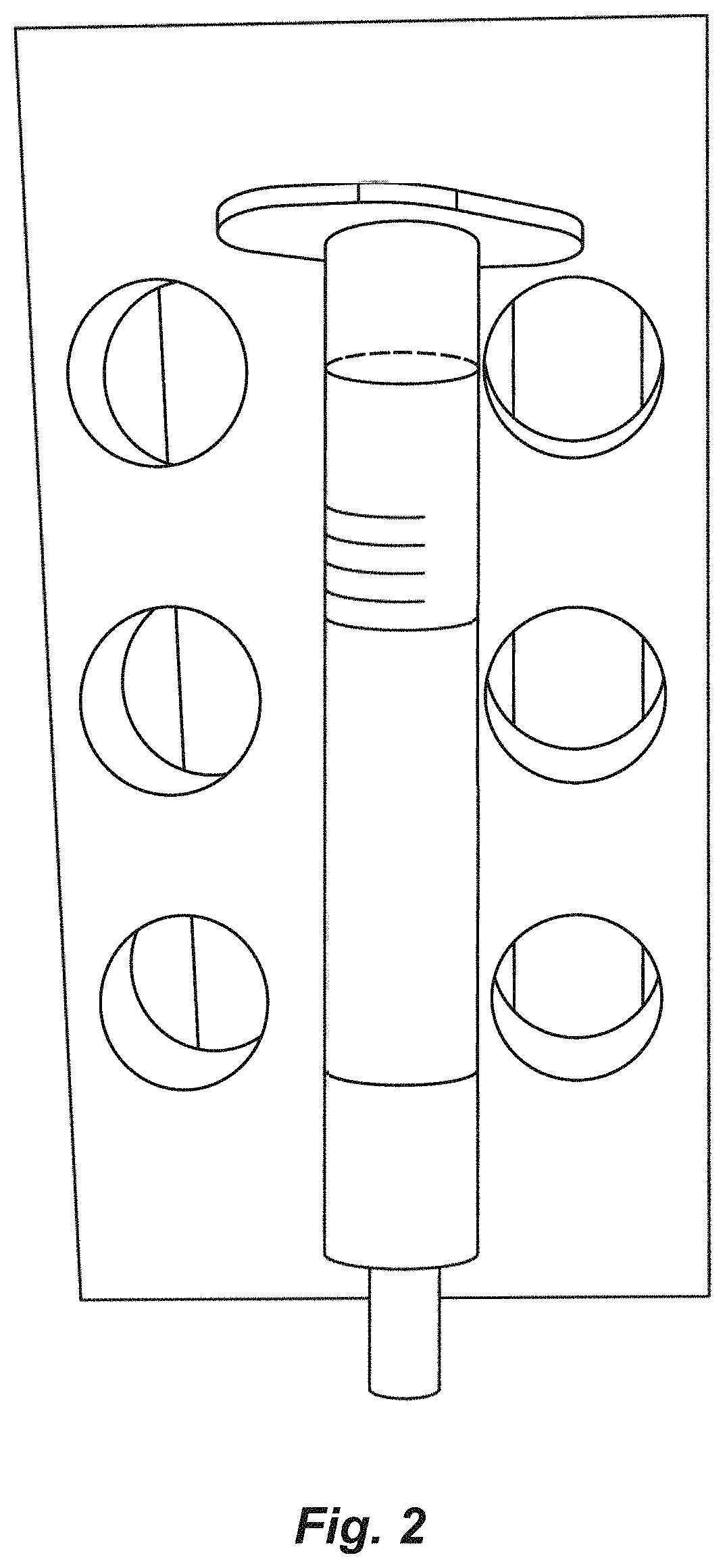Particle size purification method and devices
a technology of particle size and purification method, which is applied in the field of biological fluid screening methods, can solve the problems of high background reading distortion, high cost of reagents, and the necessity that exosomes contain antigens, and achieve the effect of providing an analysis quickly
- Summary
- Abstract
- Description
- Claims
- Application Information
AI Technical Summary
Benefits of technology
Problems solved by technology
Method used
Image
Examples
example 1
er Filter Unit
[0049]The present example details a specific configuration of the multimember filter unit that is included in the particle size separation device. The particle size separation device is referred to herein as an “ExoPen”.
[0050]The multimember filter unit comprises multiple membranes, these membranes having very small pore sizes, and are configured as part of the present separation device in a series of membranes having decreasing pore sizes. For example, a membrane providing a 80 μm filter, a membrane providing a 10 μm filter and a membrane providing a 0.2 μm filter, in series, will be assembled as part of one configuration. In addition, to make this multi-membrane unit, the 0.2 μm filter unit is separated and additional filters are added on top of the 0.2 μm filter membrane, these filter membranes being divided spatially by thin washers (see FIG. 3). The whole multi-filter construct is glued together to produce a multi-membrane filter unit (FIG. 4).
[0051]The configurat...
example 2
Exosome Purification
[0054]The present example presents a description of a method of isolating and / or providing a purified preparation of exosomes from a biological fluid using the multi-filter unit described above, such as in an ExoPen construct.
[0055]A biological fluid, such as a body fluid (serum, blood, plasma, ascites fluid) is passed through a multi-membrane filter unit (See filter depicted at FIG. 1). Any remaining biological fluid contained within the filter unit is collected by adding PBST to the filter unit and is collected as the PBST buffer is being pushed into the membrane unit.
[0056]A column (FIG. 2) was prepared using a plastic hollow cylinder with a mesh at one end that was used to hold a resin within the cylinder. GE CAPTO Core 700 beads are loaded into the column and equilibrated with 10 ml of washing buffer (PBST).
[0057]The filtered body fluid, which contains free protein and vesicles smaller then 200 nm, was loaded onto the equilibrated column, and then washing bu...
example 4
and Methods
[0060]The present example provides the materials and methods (flow chart) by which a sample may be processed to isolate by particular size, the various components in the sample. In this example, a human serum is the fluid examined. The particles being isolated are exosomes.
[0061]FIG. 5 presents a list of the types of methods employed in the analysis of a sample in assessing exosome purification efficiency employing both an ExoPen-based or EXOQUICK product-based exosome purification of a 10 human serum samples obtained from patients with a confirmed tuberculosis disease.
[0062]FIG. 6 provides a flow-chart of the workflow procedure for processing the human serum samples via either the ExoPen method (Tube 1) or the EXOQUICK product method (Tube 2).
[0063]EXOQUICK product reagent is added to serum at a 4:1 ratio (25 μl EXOQUICK product per 100 μl of serum). The sample is mixed and kept on ice for a minimal of 1 hour but can be kept at 4° C. overnight. The sample containing the ...
PUM
| Property | Measurement | Unit |
|---|---|---|
| size | aaaaa | aaaaa |
| size | aaaaa | aaaaa |
| size | aaaaa | aaaaa |
Abstract
Description
Claims
Application Information
 Login to View More
Login to View More - R&D
- Intellectual Property
- Life Sciences
- Materials
- Tech Scout
- Unparalleled Data Quality
- Higher Quality Content
- 60% Fewer Hallucinations
Browse by: Latest US Patents, China's latest patents, Technical Efficacy Thesaurus, Application Domain, Technology Topic, Popular Technical Reports.
© 2025 PatSnap. All rights reserved.Legal|Privacy policy|Modern Slavery Act Transparency Statement|Sitemap|About US| Contact US: help@patsnap.com



